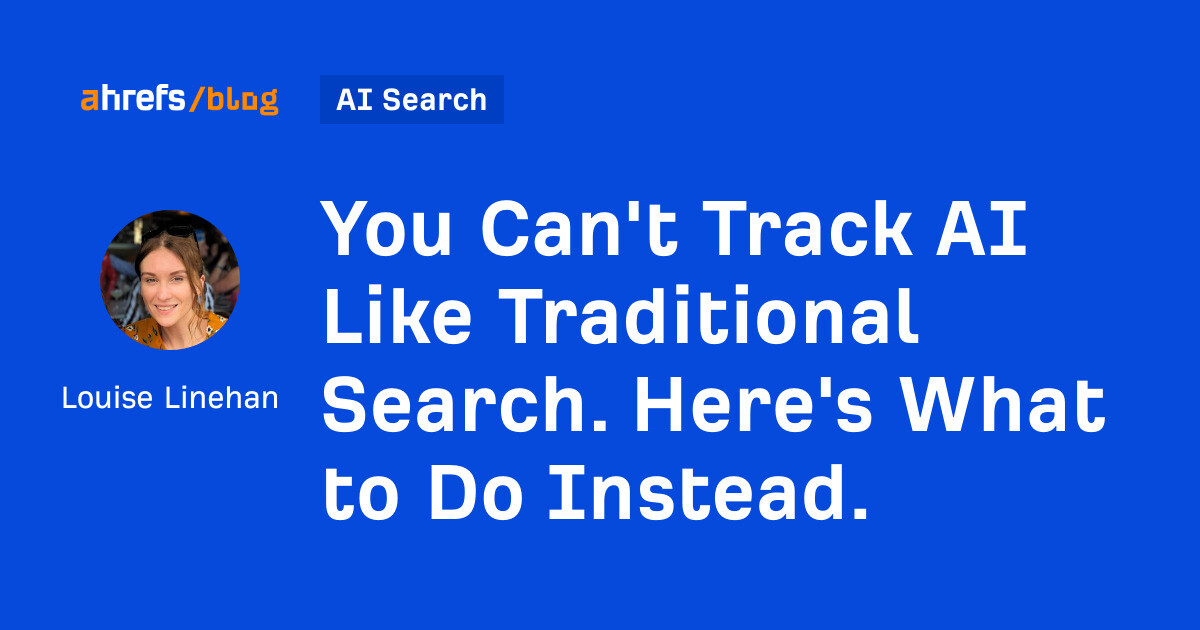What Is Search Engine Marketing? Beginner’s Guide
That’s why search engine marketing is necessary for your business. But what is it? And how do you do it? In this guide, you will learn the following: What search engine marketing is How to build a search engine...
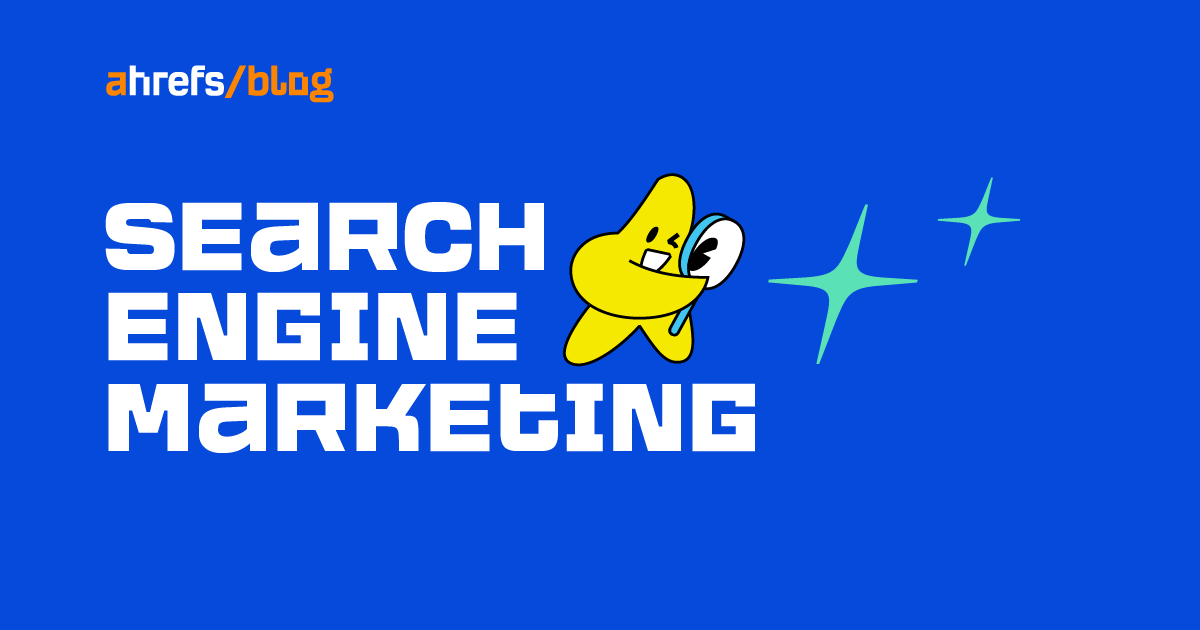
In a world with 5.6 billion Google searches per day, the importance of showing up in Google’s search results can’t be overstated. That’s why search engine marketing is necessary for your business. But what is it? And how do you do it? In this guide, you will learn the following: Search engine marketing (SEM) is a type of digital marketing that utilizes search engines to get more traffic to your website. Many industry “experts” often use SEM to talk about pay-per-click (PPC) advertising. However, SEM encompasses paid marketing and organic search engine optimization (SEO). Let’s clarify this a bit. The main difference between SEM and SEO is that the goal of SEO is strictly to get organic traffic from search engines like Google, whereas the goal of SEM is to use both organic and paid methods. SEO falls under the umbrella of SEM. The main difference between SEM and PPC advertising is that PPC is strictly about purchasing ad placements on a search engine, whereas SEM can include SEO. We believe it’s best to have an all-encompassing SEM strategy that includes PPC ads and SEO so that you’re not leaving money on the table. But how do you do that? Building a cohesive SEM strategy involves determining which keywords to target with SEO, PPC, or both. Which strategy you use depends on a few things, which we’ll cover shortly. So if you haven’t done keyword research already, that’s your first step. You can learn how to do that in our comprehensive keyword research guide. But if you want a quick way to find keywords, enter a few broad topics into a keyword research tool like Ahrefs’ Keywords Explorer and check the Matching terms report. For example, if you have a site about fashion, you may enter broad topics like “fashion,” “hoodies,” and “tshirts.” Then you can sift through the ideas for anything with decent search volume that customers are likely to be searching for. Once you’ve got some keywords, follow the decision tree below to decide whether to target them with SEO, PPC, or both: Let’s go through this process in more detail. For this question, you’re analyzing a keyword’s search intent. You’re looking for one of two types of searches: To determine which type of search a keyword is, analyze the SERP for informational vs. commercial intent. In other words, are people looking to learn something or buy something? For example, let’s look at the keyword “fashionable sneakers.” The SERP overview shows us that most results are listicles with sneaker recommendations. This tells us this keyword is primarily informational. Searchers are looking to learn. In this case, your questioning ends here in the decision tree because you know you should target the keyword with SEO. Sidenote. Although there are occasionally reasons you may want to run ads to “informational” keywords, you will generally only run ads for transactional keywords, as it’s too costly otherwise. However, if we look at the SERP for “hoodies,” all of the results are e‑commerce pages selling hoodies: This tells me this keyword is transactional. So searchers are looking to buy. In this case, we need to ask more questions to figure out how to target the keyword. This is a question of keyword ranking difficulty. If you can potentially rank organically for a keyword easily, you may want to consider SEO. If not, you will need PPC (at least in the short to medium term). You can get a rough idea of how hard it may be to rank for a keyword with the Keyword Difficulty (KD) metric in Keywords Explorer. This metric runs on a scale from 0 to 100, with keywords scoring “0” being the easiest to rank for. For example, if we plug the keyword “tshirt” into Keywords Explorer, we see that its KD score is 74: That signals that this keyword is likely tough to rank for. We base our KD score on the number of referring domains (linking websites) to the top-ranking pages. If you scroll down to the SERP overview, you’ll see why KD is so high for this keyword—all of the top-ranking pages have hundreds of referring domains. However, KD only gives you the rough difficulty of ranking for a keyword. And it can sometimes be misleading. For example, the KD score for the keyword “black tshirt” is 1—which seems very easy. But if you scroll down to the SERP overview, you’ll see a first page dominated by household brands like Amazon, Target, Nordstrom, Zara, and Kohls. This indicates that searchers are probably looking to buy from well-known brands, so it’s going to be pretty tough to rank anytime soon if that’s not you. The point here is that you shouldn’t rely entirely on third-party metrics like KD when deciding the ranking difficulty of a keyword. Read our post on determining ranking difficulty if you want to learn more. If you don’t think you can rank anytime soon for your keyword, use PPC. If you think ranking in the short to medium term is possible, use SEO. However, even if you can rank, you may still want to consider using PPC. To decide if this is right for you, you need to answer one more question. Even if you’re able to rank for a keyword easily, high clicks going to ads signal that you may want to do both PPC and SEO to monopolize the SERP and get more clicks. You can see how many clicks the keyword ads are getting in Ahrefs’ Keywords Explorer by hovering over the green, yellow, and orange bar in the Volume box. For the keyword “tshirt,” the paid ads get 8% of the clicks, and 2% of searches get clicks on both the paid and organic results. So roughly 10% of searches have at least one ad click. This seems low. However, notice that 63% of searches result in no clicks whatsoever. Only 37% get clicks. This means that roughly a quarter of searches with clicks get ad clicks. So, in this case, using PPC ads and SEO (if you can rank) is probably the best bet. Rinse and repeat this process for all of your keywords to determine which strategy to use for each. If you need more help deciding which strategy to use, check out our SEO vs. PPC guide. Now you should have a spreadsheet full of keywords, and you should know which ones you’re targeting with SEO, PPC, or both strategies. Rather than overwhelming you with everything you need to know about SEO and PPC, I’ll offer the basics of how each of these works and give you links to dive deeper into the concepts. For your SEO keywords, you’ll need to start an SEO campaign. This means creating new content for the keywords you don’t have content for yet and optimizing old content for those you do have content for. Essentially, SEO can be boiled down to three main activities: Follow the links to learn more about how to do these things. If you have no idea where to start, refer to our beginner’s guide to SEO basics. For your PPC keywords, you’ll need to know the basics of how Google ads work. Running an ad boils down to: First, create a free Google Ads account and familiarize yourself with the dashboard. Then, watch this excellent video overview of how to get started with Google Ads. Google uses the ad auction system to determine which ads should be displayed every time a search is done or every time a site with Google Ads is visited. This is important to understand because it can make the difference between running successful ads and wasting money on ads that are too expensive. There are three main factors that the ad auction uses to determine which ads get shown on a page: The main takeaway here is that two-thirds of the factors that determine how well your ad performs are specifically performance metrics, not just how much you’re willing to spend. In other words: If you have a high-quality, relevant ad, you can earn more for less. Head to our guide to PPC basics for a more in-depth overview of how to do PPC search ads. Now that you understand what SEM is and how to do it, let’s look at a few examples of companies that have used the full scope of SEM to grow their business. As I mentioned before, Ahrefs gets nearly 1 million organic visits to its site per month. We’ve spent thousands on PPC advertising, and our blog has content that ranks for almost every SEO-related keyword you can think of. Here are a few keywords we’ve been targeting with PPC campaigns, found using our Paid keywords report in Ahrefs’ Site Explorer. As far as SEO content goes, some of our most popular high-ranking articles include the following: I used the Top pages report in Site Explorer to find out which are our highest-performing pages. Next up, we have Canva, my favorite graphic design tool. It receives a whopping 70.3 million organic visits per month! Canva is an excellent site to look at because it uses SEO on many commercial and informational keywords. In fact, one of its best keywords is “make free logos,” which gets 119,000 searches per month and leads to a free logo creation tool it built. If we look at its Paid keywords report, we can see it’s bidding on over 900 keywords. Take a browse through its blog to get some ideas of how it approaches SEO and content creation. The Wandering RV is a digital publisher for RV owners. It receives over 100,000 organic visits per month. It made a spot on this list because of its skillful use of statistics pages to build links. By ranking for keywords like “how many people die in car accidents” and “RV industry statistics,” the two pages have received links from 500 referring domains. These aren’t just any links. We’re talking about high Domain Rating (DR) links from websites like iHeartRadio, AOL, and Life Hacker. While link building is one of the hardest parts of SEO, building statistics pages like these is one of the easiest ways to acquire high-quality links with minimal manual outreach. If you want to learn this link building strategy, check out our case study on how we ranked #1 for “SEO statistics” and acquired 36 links from 32 unique domains. It walks you through our exact process step by step. SEM is crucial for almost all businesses these days. If you have customers who use Google, you should probably be implementing some form of SEM. Hopefully, you now have a complete SEM strategy to execute. If you’re still stumped, here are a few other articles to help you get the ball rolling:SEM vs. SEO
SEM vs. PPC
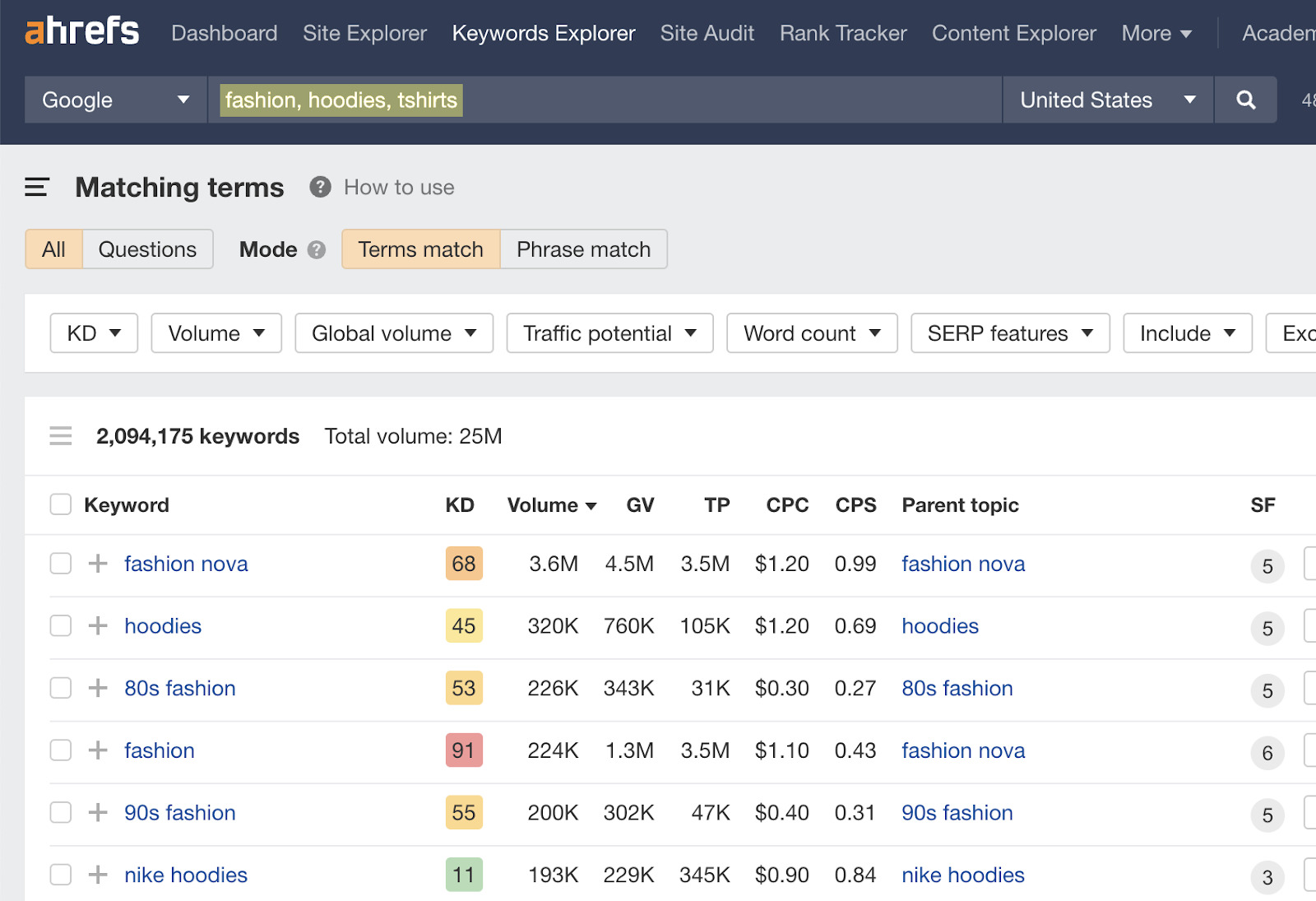
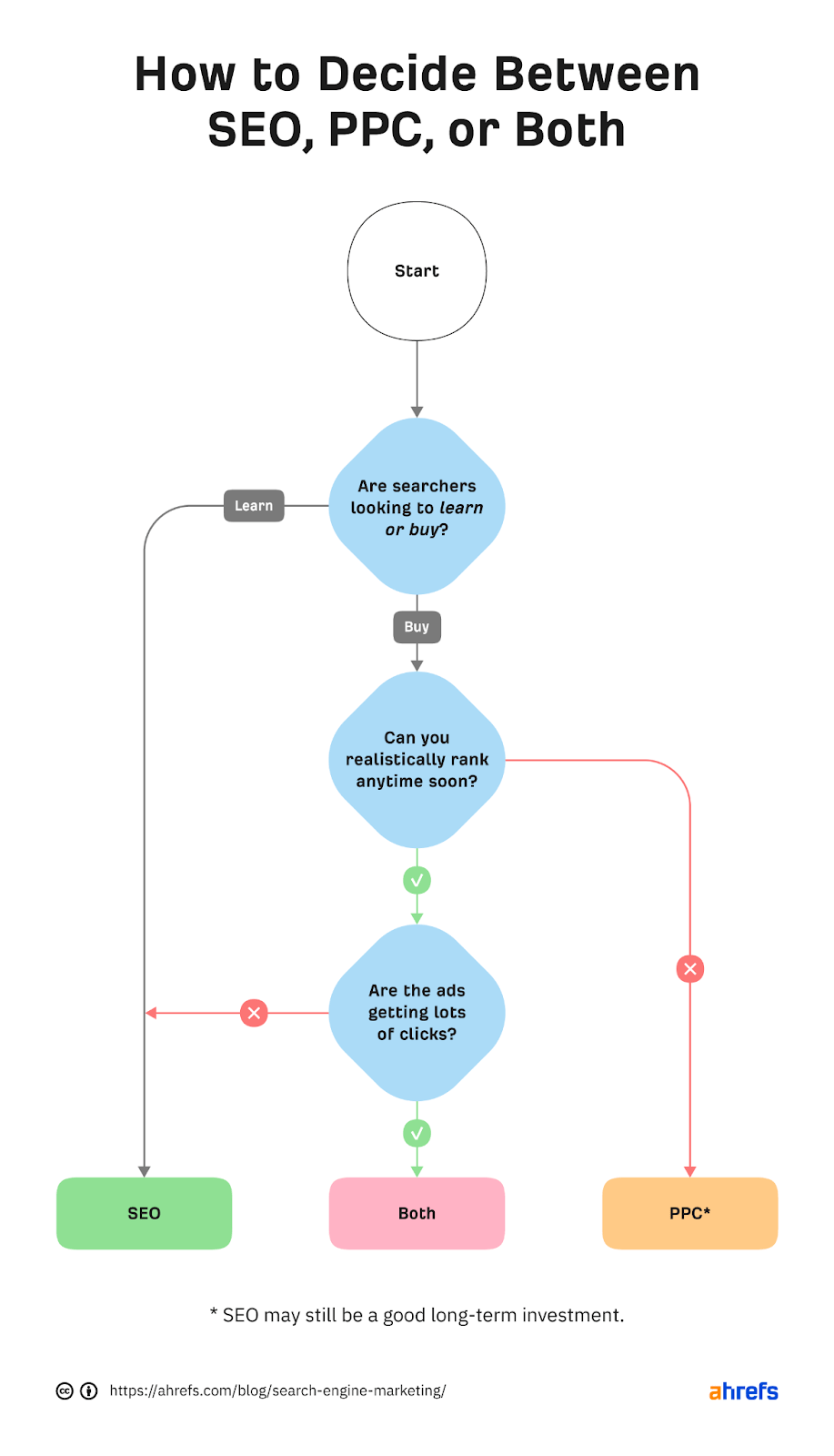
Question 1. Are searchers looking to learn or buy?
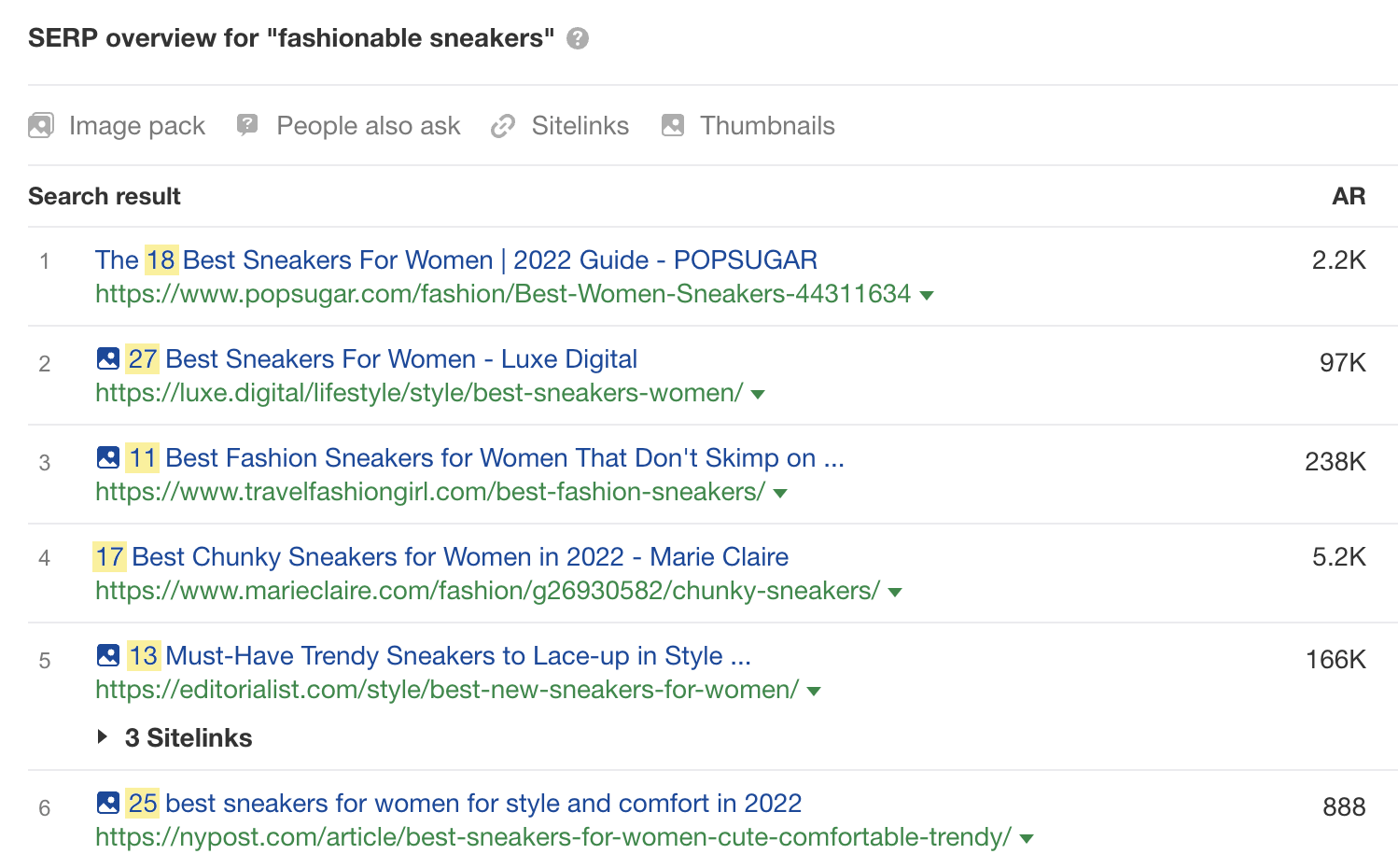

Question 2. Can you realistically rank anytime soon?

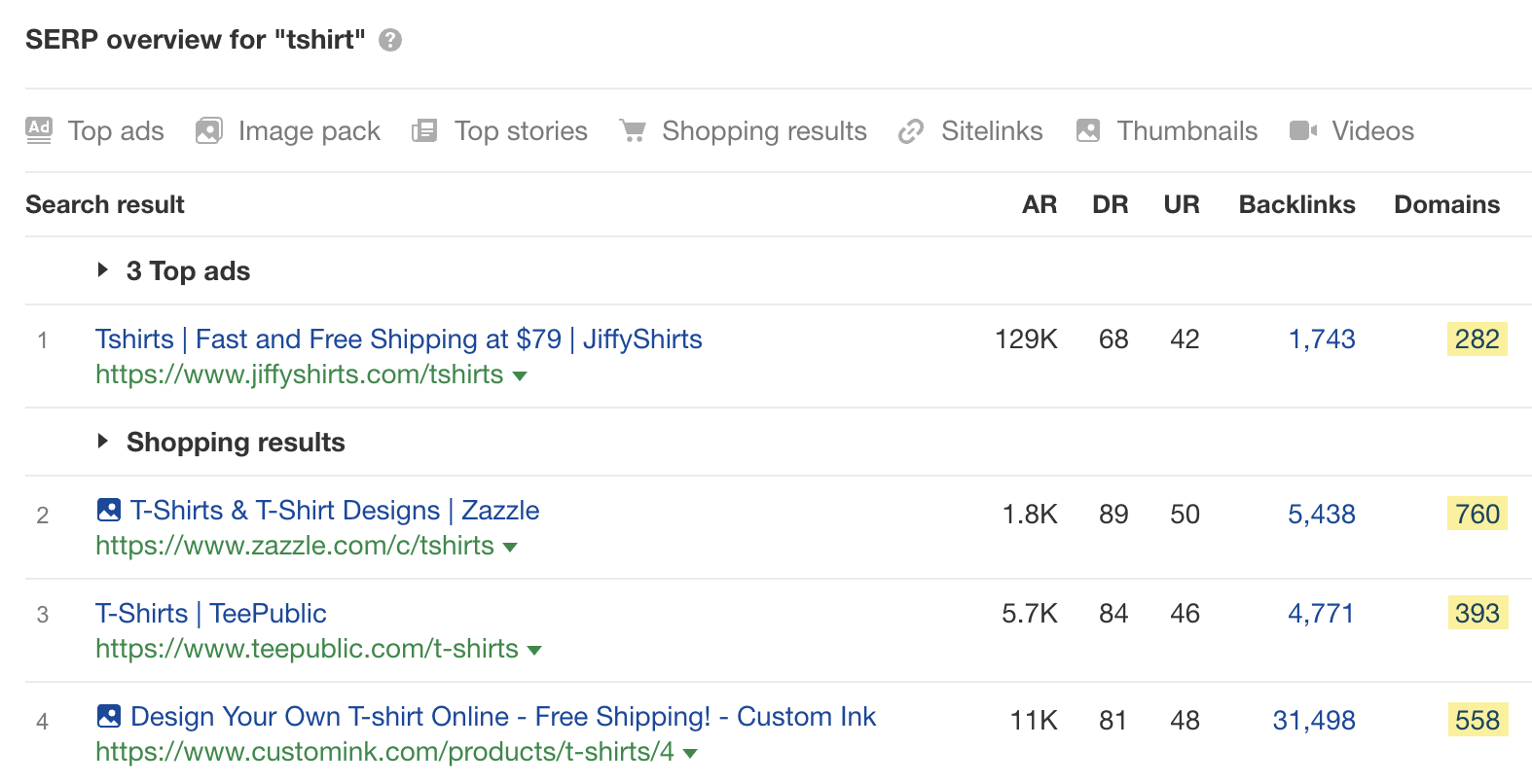

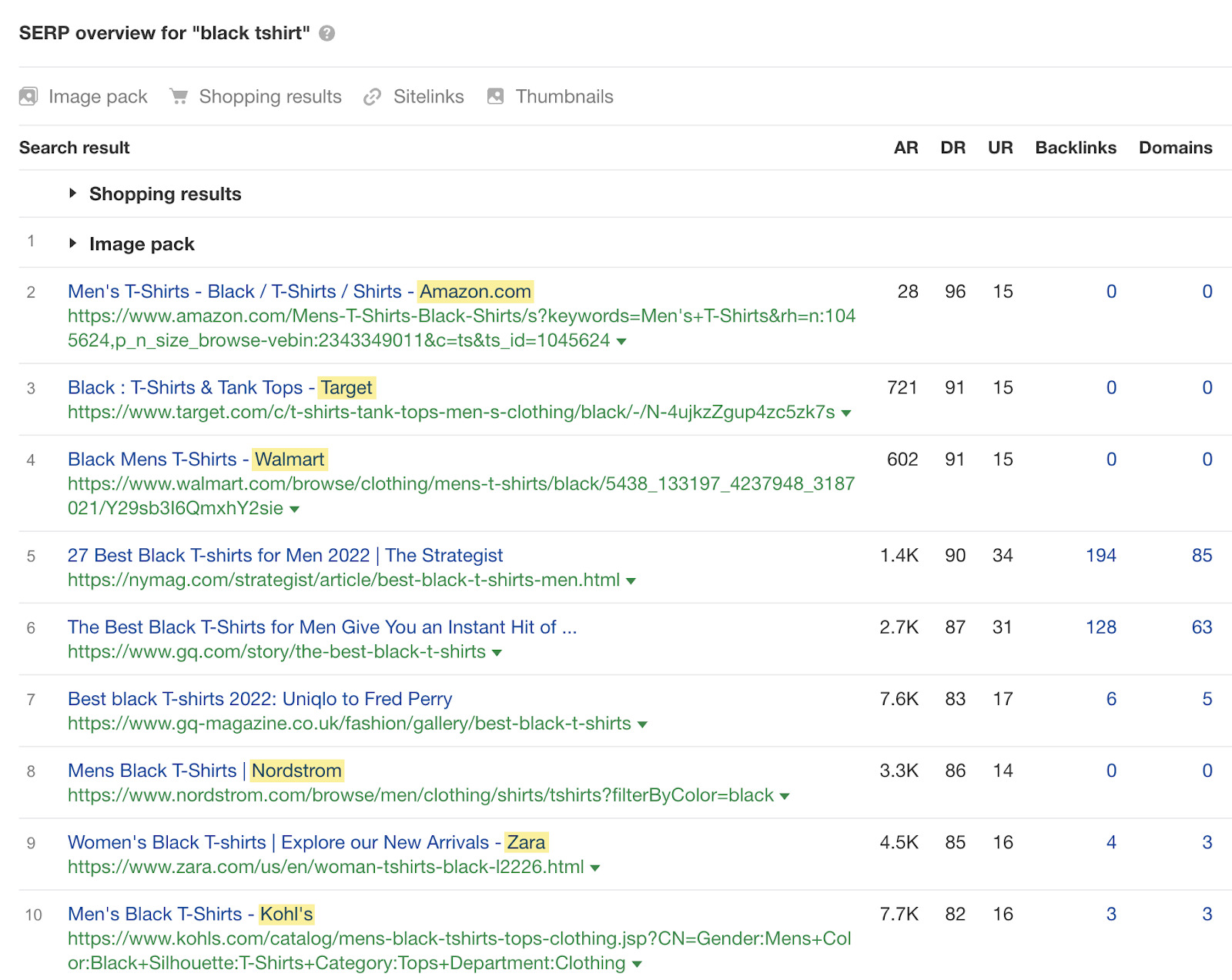
Question 3. Are the ads getting lots of clicks?

Basics of SEO
Basics of search engine PPC marketing
How the Google Ad auction works
1. Ahrefs



2. Canva


3. The Wandering RV



Final thoughts

 Koichiko
Koichiko 


























